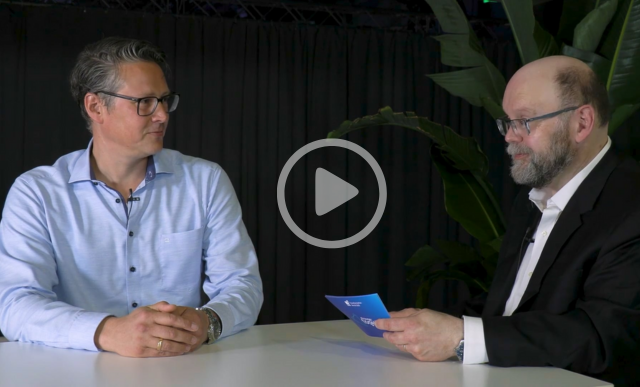/Mobile
Data governance can cripple a good mobility program — or ensure its likely success. Find out why data governance is important for mobile BI performance.
Key Concept
Data governance — the rule set around how data is used, matured, and crafted for use as information — is perhaps even more important for mobile BI projects than traditional on-premises BI efforts. Without a data governance strategy, mobile BI projects stand to fail at higher rates than on-premises BI counterparts.
With the introduction of new mobile and cloud applications over the past two years with the acquisitions of SuccessFactors and Sybase, SAP now has the ability to run native applications across on-premises, cloud, and mobile computing domains. Organizations are looking at cross-topologies based on function and business unit structures to determine the best trade-offs for application use given their current and future needs.
This environment opens the door to a new dimension of data governance concerns and policies. What applications consume what data? Where does it come from? Who manages the data rights around use and the accuracy of information sources? Based upon the need to use — or not use — particular data sources for applications and the native structure of those applications, program managers and data architects need a set of best practices to lead future development efforts around data use and application integrations.
Increase Data Visualization in Mobile Apps Using the Mobile Analytics Kit
“Strategies to Use Mobility for Effective Data Analysis and Data Governance,”Figure 1)
Figure 1
Choices among cloud, mobile, and on-premises applications
For example, a company might run its manufacturing operations using SAP ERP, offer its employees self services and HR enrollments in the cloud using SuccessFactors, and access its financial information using SAP Enterprise Performance Management OnDemand mobile applications enhanced by in-house-developed analytic tools. Cloud options include private and self-hosted, public-hosted (e.g., Amazon Web Services for SAP HANA One), and even hybrid clouds in which applications are served in the cloud but the data is hosted privately (this is an option to consider for HR and financial data in particular).
With these many options comes what I figuratively call an “architectural freedom layer,” in which program managers and data architects have the ability to select what topologies work best for their specific situation.
The challenge with choice is the need for greater governance. It’s easy to have siloed information in an on-pemise application model. Departments control their own data flows and updates, and as long as that data is consumed accordingly, there are few issues once the system configuration is defined. When introducing mobile and cloud computing, however, traditional data consumption models break down. Designers need to know what specific information is consumed by what user class and how frequently. This answer can change dynamically throughout an organization’s daily, weekly, and monthly operations.
This idea can be a difficult to comprehend. So, let me take a moment to step back and give some tangible examples as to why data consumption and governance are inextricably connected in the “new normal” of multi-tiered and hybrid SAP computing.
Why Data Consumption and Data Governance are Connected
My firm recently worked with a client in the utilities space looking to extend its SAP Supplier Relationship Management (SRM) capabilities through a mobile app for capital assets leasing. It was a simple extension of a core process already on the SAP SRM platform my client was using — or at least I thought so. However, not only was the data source fragmented and in a legacy database not accessible to the procurement team, but the ABAP programming modifications that were purportedly in the SAP SRM production system had not been tested or released. Our planning efforts ground to a halt because there were simply too many planning issues to overcome. In short, the mobile app had nothing to talk to even if I had built it.
Data consumption models require great access to many disparate sources of information. The SAP Mobile Platform (known as the Sybase Unwired Platform) consumes data required for the mobile app requesting information without regard for the origin and form of the information. This arrangement is great for hybrid data environments, as data can natively reside in formerly flat files, databases, and BI cubes based on need and position in the organization. While you don’t have to waste time and push everything into BI cubes, for example, you do need to know where your data is and where it needs to go to service applications.
Putting everything into an SAP HANA data stack is a simple solution. Because the data is in-memory, it is available to be consumed by cloud, mobile, and on-premise applications. While this approach is quick and relatively easy architecturally, it does require investment in infrastructure, time, and data cleansing. Many organizations are not in a position to do this work as a part of a transition-to-cloud effort because most cloud and mobile initiatives are intended to drive costs down while increasing data performance and availability. Feeding cloud and mobile apps, using such tools as Mobile Business Objects, requires a more thoughtful and deliberate approach as to how, where, and how frequently information is used, and by whom.
As such, a sound data governance strategy and approach using proven best practices is important as you consider how to prepare to move your on-premise BI environment to mobile BI capabilities.
See my article, “7 Tips to Heed for Successful Mobile BI Data Governance,” in which I explain the key steps you want to keep in mind for sound data governance.

William Newman
William Newman, MBA, CMC is managing principal of Newport Consulting Group, LLC, an SAP partner focused on EPM and GRC solutions. He has over 25 years of experience in the development and management of strategy, process, and technology solutions spanning Fortune 1000, public-sector, midsized and not-for-profit organizations. He is a Certified Management Consultant (CMC) since 1995, qualified trainer by the American Society of Quality (ASQ) since 2000, and a trained Social Fingerprint consultant in social accountability since 2012. William is a recognized ASUG BusinessObjects influencer and a member of SAP’s Influencer Relations program. He holds a BS degree in aerospace engineering from the Henry Samueli School of Engineering and Applied Science at UCLA and an MBA in management and international business from the Conrad L. Hilton School of Management at Loyola Marymount University. He is a member of the adjunct faculty at both Northwood University and the University of Oregon with a focus on management studies and sustainability, respectively.
If you have comments about this article or BI Expert, or would like to submit an article idea, please contact the editor.
You may contact the author at wnewman@newportconsgroup.com.
If you have comments about this article or publication, or would like to submit an article idea, please contact the editor.







